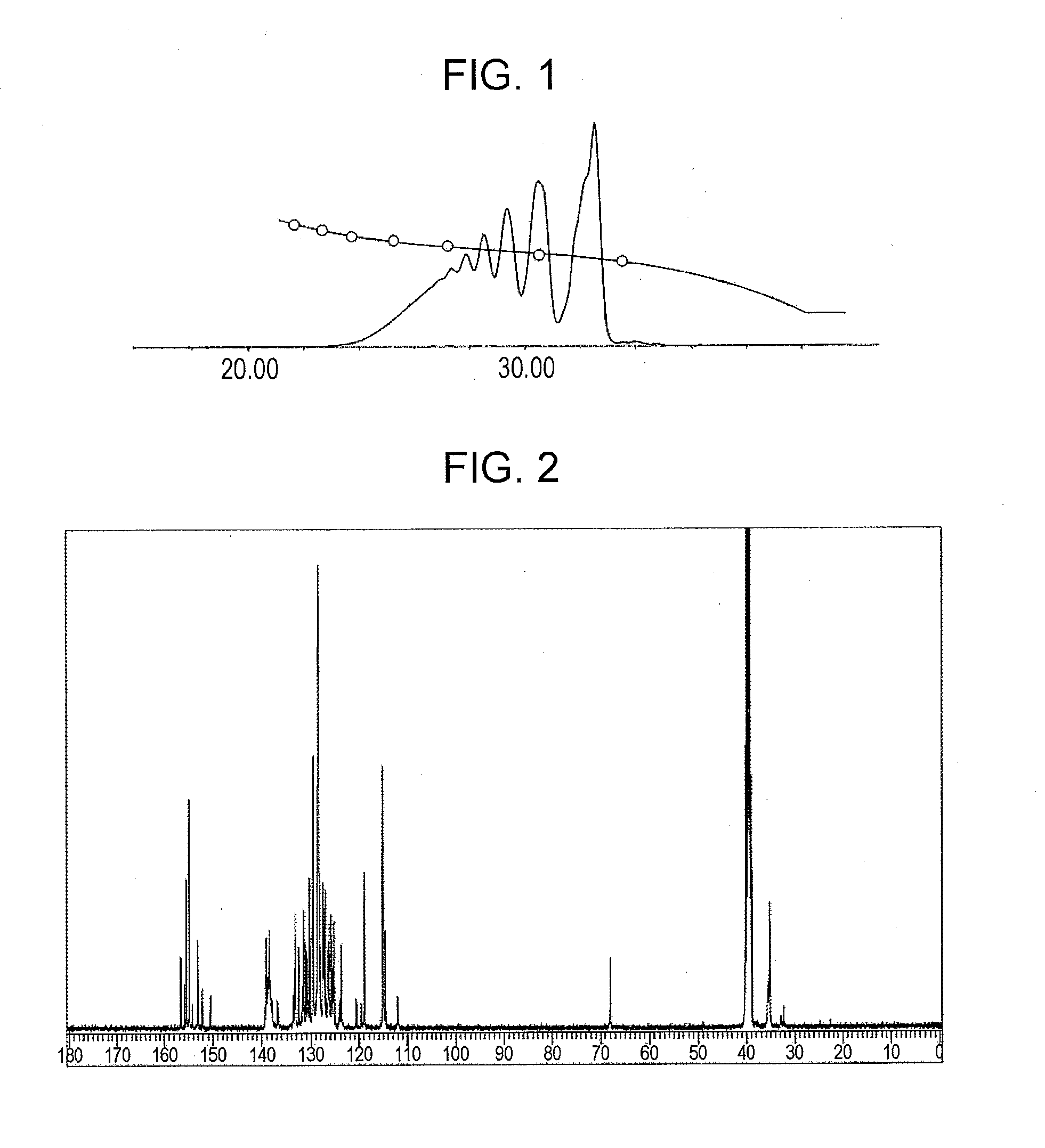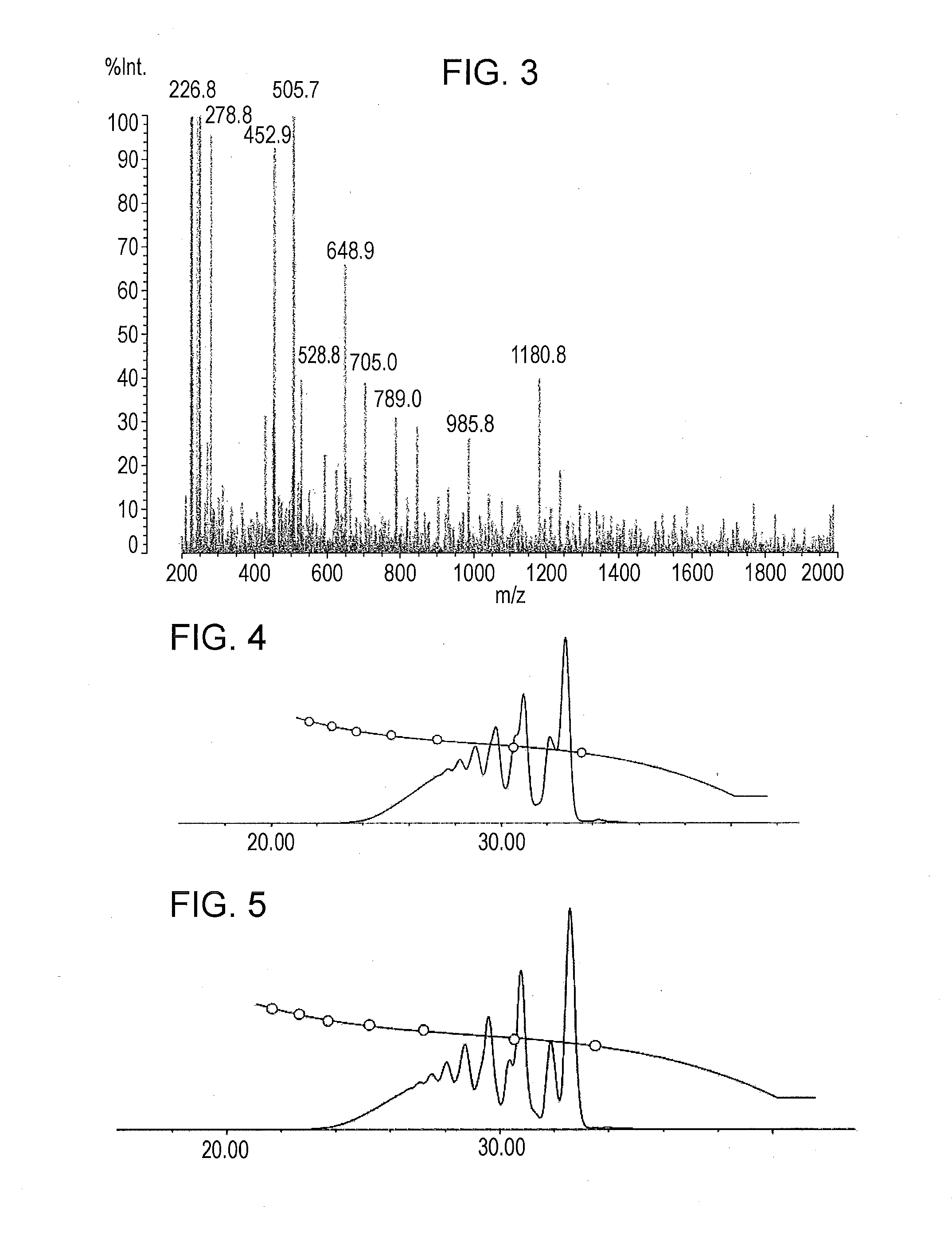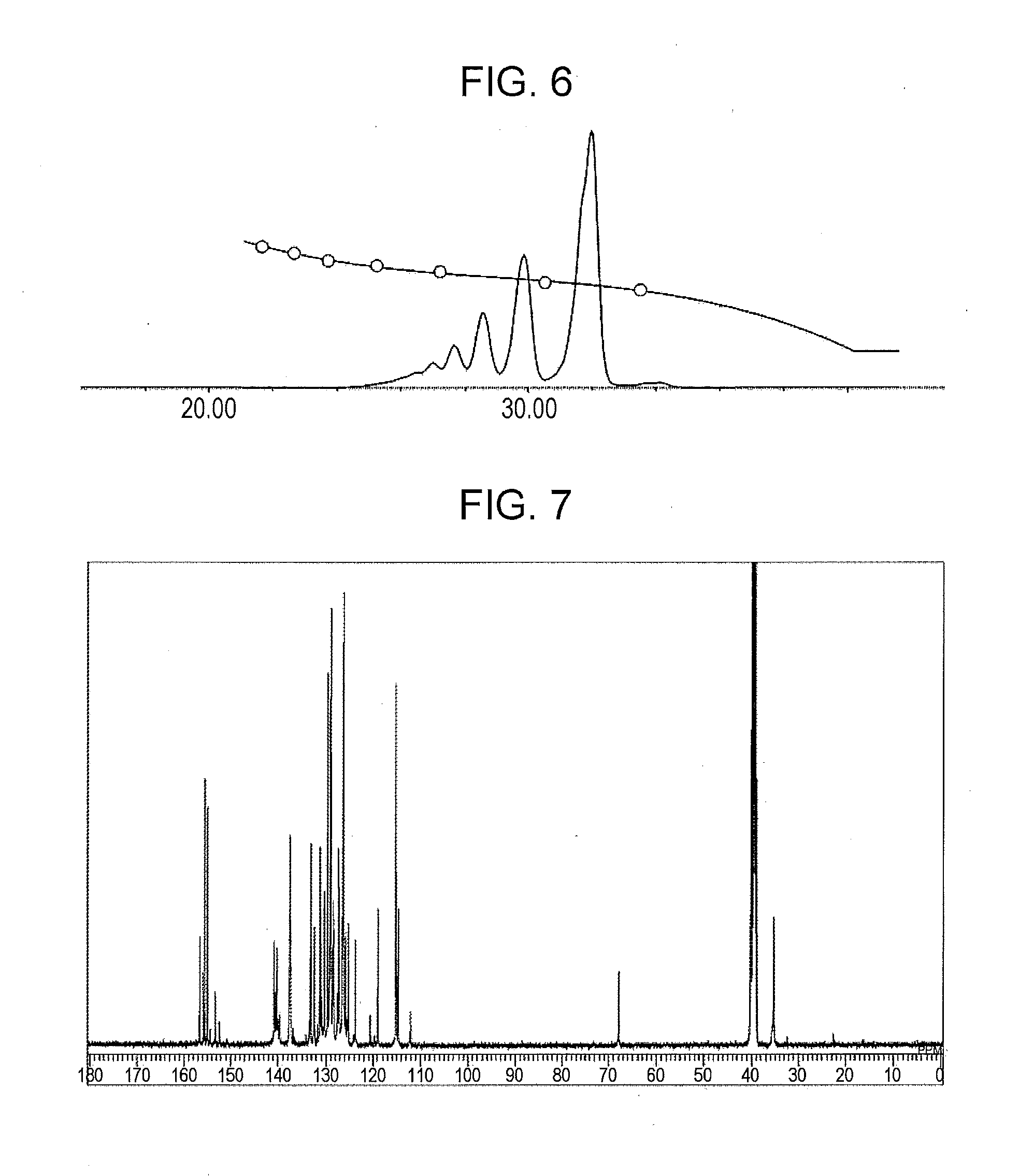Curable resin composition, cured product thereof, phenolic resin, epoxy resin, and semiconductor sealing material
- Summary
- Abstract
- Description
- Claims
- Application Information
AI Technical Summary
Benefits of technology
Problems solved by technology
Method used
Image
Examples
example 1
Synthesis of Phenolic Resin (A-1)
[0146]In a flask equipped with a thermometer, a condenser tube, a distilling tube, a nitrogen gas-introducing tube, and a stirrer, 168.0 g (hydroxyl group: 1.00 equivalent) of a phenol aralkyl resin (“XLC-4L” manufactured by Mitsui Chemicals, Inc.), 45.9 g (0.26 moles) of 1-chloromethyl naphthalene, and 300.0 g of methyl isobutyl ketone were charged while nitrogen gas was purged, and the resulting mixture was stirred at room temperature while nitrogen was blown. The temperature was increased to 60 degrees (Celsius), and 23.3 g (0.29 moles) of an aqueous 49% sodium hydroxide solution was then added dropwise to the mixture over a period of one hour. After the completion of the addition, the temperature was increased, and the mixture was allowed to react at 70 degrees (Celsius) for two hours, at 95 degrees (Celsius) for two hours, and further for five hours while the mixture was refluxed. After the completion of the reaction, the temperature was decreas...
example 2
Synthesis of Phenolic Resin (A-2)
[0148]A phenolic resin (A-2) was prepared as in Example 1 except that 28.3 g (0.16 moles) of 1-chloromethyl naphthalene and 14.4 g (0.18 moles) of an aqueous 49 mass % sodium hydroxide solution were used. The resulting phenolic resin had a softening point of 70 degrees (Celsius) (B & R method), a melt viscosity (measuring method: ICI viscometer method, measuring temperature: 150 degrees (Celsius)) of 1.1 dPa·s, and a hydroxyl equivalent of 227 g / eq.
A GPC chart of the prepared phenolic resin is shown in FIG. 4. The ratio of a phenolic hydroxyl group to a naphthylmethyloxy group or an anthrylmethyloxy group was 84:16.
example 3
Synthesis of Phenolic Resin (A-3)
[0149]A phenolic resin (A-3) was prepared as in Example 1 except that 14.1 g (0.08 moles) of 1-chloromethyl naphthalene and 7.2 g (0.09 moles) of an aqueous 49% sodium hydroxide solution were used. The resulting phenolic resin had a softening point of 68 degrees (Celsius) (B & R method), a melt viscosity (measuring method: ICI viscometer method, measuring temperature: 150 degrees (Celsius)) of 1.0 dPa·s, and a hydroxyl equivalent of 195 g / eq.
A GPC chart of the prepared phenolic resin is shown in FIG. 5. The ratio of a phenolic hydroxyl group to a naphthylmethyloxy group or an anthrylmethyloxy group was 92:8.
PUM
| Property | Measurement | Unit |
|---|---|---|
| Temperature | aaaaa | aaaaa |
| Fraction | aaaaa | aaaaa |
| Percent by mass | aaaaa | aaaaa |
Abstract
Description
Claims
Application Information
 Login to View More
Login to View More - R&D
- Intellectual Property
- Life Sciences
- Materials
- Tech Scout
- Unparalleled Data Quality
- Higher Quality Content
- 60% Fewer Hallucinations
Browse by: Latest US Patents, China's latest patents, Technical Efficacy Thesaurus, Application Domain, Technology Topic, Popular Technical Reports.
© 2025 PatSnap. All rights reserved.Legal|Privacy policy|Modern Slavery Act Transparency Statement|Sitemap|About US| Contact US: help@patsnap.com



